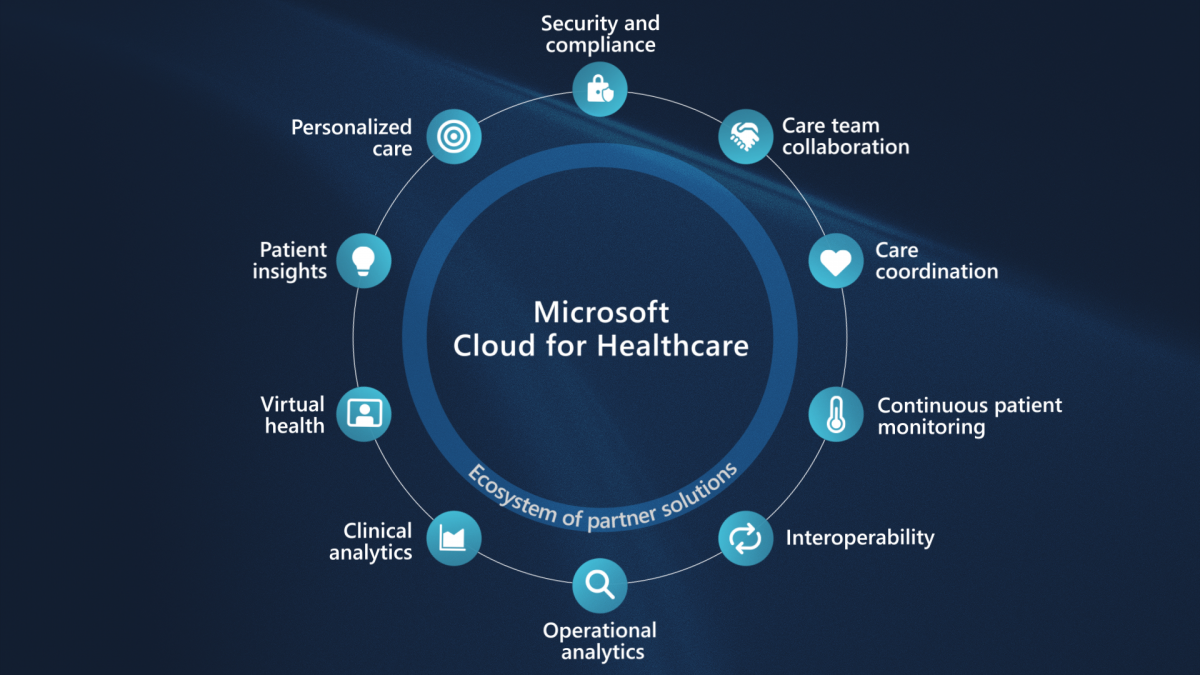This week Microsoft kicked off Ignite 2020, the tech company’s annual conference to showcase its enterprise products and services and provide valuable training for developers and IT professionals. A common theme emerged during this year’s conference: Organizations need to harness new technology, and the new levels of speed and agility that come with it, to remain resilient as the world changes around us.

In past years, Ignite has served as a popular gathering place for the employees of Microsoft and its Partners, like Blueprint, to send employees for networking and training opportunities. This being no normal year, the event was held 100 percent virtual, but that didn’t stop the company from going all out with announcements and updates to its lineup of products.
Microsoft remained focused on the changes brought on by COVID-19 and the fact that the organizations that have embraced digital transformation and the power of technology have been best able to smartly shift and remain adaptable, reimagining what’s possible and thriving in the new normal. The company announced new tools to help businesses and organizations solve the immediate challenges they face, while also setting them up for future success.
As a Microsoft Gold Partner, Blueprint is singularly focused on helping organizations achieve their digital transformation goals, so we always have wide attendance at this event. Here are 15 takeaways from this year’s Ignite that stood out to us.
Microsoft Launches Healthcare Cloud

Microsoft will make its first industry-specific cloud, Microsoft Cloud for Healthcare, generally available at the end of October. The cloud is architected to comply with regulatory needs and includes capabilities from Microsoft Azure, Microsoft 365, Microsoft Dynamics 365 and the Microsoft Power Platform. The goal is to help healthcare organizations deliver value, adapt and transform faster and make more impactful decisions.
“We’re helping shape and scale digital health capabilities that empower healthcare organizations to get inspired with insights, tools, resources and rapidly build solutions to drive better experiences, insights and care,” Microsoft said.
With the new Microsoft Teams EHR connector, now in private preview, clinicians can launch virtual patient visits or provider consultations in Teams directly from the electronic health record (EHR). This streamlines user experiences, charting and IT manageability. Microsoft focused on the Epic EHR system first due to its widespread use, but support for others will be coming soon, the company said.
Teams Enhancements to Drive Sucess
Microsoft announced several new ways for organizations and companies to empower their employees in the age of remote work.
- Microsoft launched new Together Mode scenes and custom layouts that make presented content more dynamic and engaging. Personal well-being insights and features have also been integrated within Teams, including integration with apps like Headspace. This makes it easier for employees to de-stress and find focus through meditation before, during or after busy workdays.
- Workplace Analytics within Teams now gives managers and leaders a window into organizational resilience by surfacing insights that help them understand if employees are at risk of burnout, or if employees are able to maintain strong connections with colleagues and customers. Users can now also access data insights using Power BI within Teams to help everyone make better business decisions. For example, PayPal recently moved to Teams and added a tab for Power BI visualizations to Teams meetings, providing an easy way to share a project’s status and goals.
Azure News You Can Use
- Azure Communications Services allows businesses to securely build and deploy communications platforms on the same low-latency global communication network used by Microsoft Teams. This will make it easier to add voice and video calling, chat and SMS texting to a company’s own mobile apps, desktop applications and websites with just a few lines of code. It allows developers to tap into other Azure services, such as Azure Cognitive Services, for translation and sentiment analysis.
- Microsoft also announced the preview of Azure Orbital, which lets customers quickly process and analyze data captured from satellites in space, such as weather imaging or ground communications. With access to low-latency global fiber networks and the global scale of Microsoft’s cloud services, customers can take advantage of large satellite datasets without having to deploy special hardware in its own data centers or on ground stations. The data goes straight to Azure and can be processes with all the Azure offerings. Azure Orbital “is a fully managed ‘Ground-Station-as-a-Service’ that lets you communicate with, control your satellite, process data and scale your operations directly in Microsoft Azure,” Azure Networking senior Program Manager Hrishi Shelar said during the conference.
Dynamic 365 Updates Focus on Resilience
- A first-party voice channel for Dynamics 365 Customer Service built on Azure Communication Services integrates voice into existing omnichannel capabilities. AI-powered features help resolve issues faster, including real-time agent suggestions and sentiment analysis. With the help of Microsoft’s Common Data Model, voice channel data also natively integrates into pre-existing datasets, so no data manipulation or reformatting is necessary.
- A Cloud and Edge Scale Unit add-in for Dynamics 365 Supply Chain Management allows organizations to run critical warehousing and manufacturing workloads using Edge Azure stack devices to ensure operations continue without interruptions even when temporarily disconnected from the cloud. An Inventory Visibility add-in allows large-volume retailers and manufacturers to easily handle millions of transactions every minute and determine cross-channel inventory accurately in real time. Organizations can easily scale to fulfill orders from multiple channels on time and mitigate stock-outs and overstocking.
- Dynamics 365 Project Operations integrates with current enterprise systems to drive business growth across sales and delivery processes, without the need to replace existing systems. It is a unified solution that delivers precision tracking of project costs, resource utilization, timely billing and revenue recognition. It improves collaboration with visibility into back-end and front-end processes in the same application
Power BI Enhancements for Better Decision-making
- Enhancements to the Power BI app for Teams, coming in public preview later this year, make it easier to discover data from across an organization and quickly create visualizations from Excel datasets within Teams. It will also allow people to collaborate more effectively and make decisions based on real-time insight. It creates a centralized place for users to find and analyze data, while enhancing usage of Excel and Teams with embedded channel, chat and meeting experiences.
- Microsoft announced that Power BI Premium Per User will be in public preview starting in November. It is an option for organizations not ready for the full Premium, which is available as a capacity license for an entire organization. Premium Per User offers a new way to drive a data culture in organizations of any size at a competitive price, unlocking Premium features for smaller entities, including AI capabilities.
These are just some of the hundreds of new features and capabilities Microsoft has announced recently that are designed to help leaders and employees alike face new challenges. Both Microsoft and Blueprint’s goal is to meet businesses where they are and provide solutions to help them be resilient and move their business forward in today’s market. Blueprint is here to partner with you on that journey.
Don’t know how to begin your tech journey? Start here.

